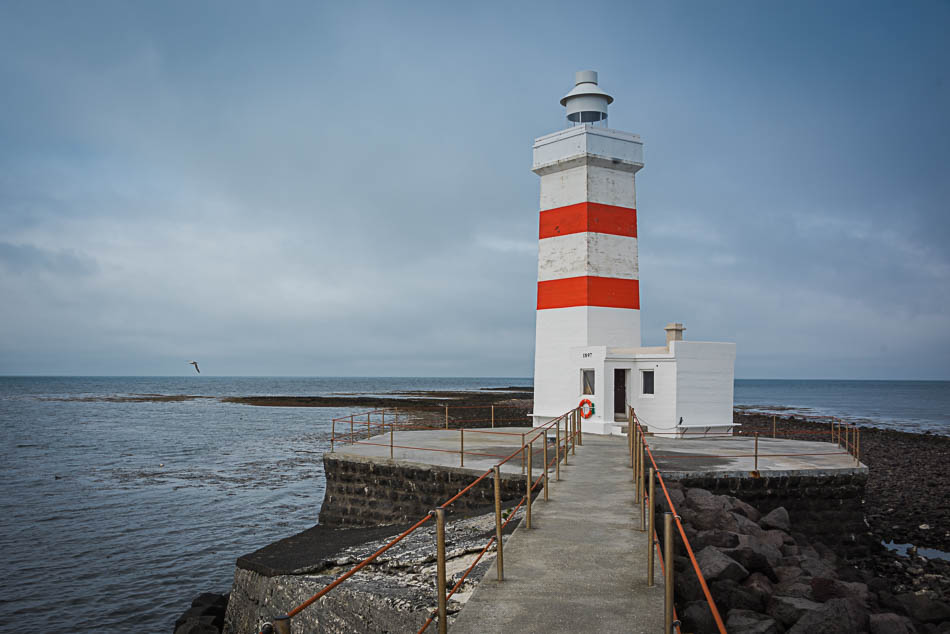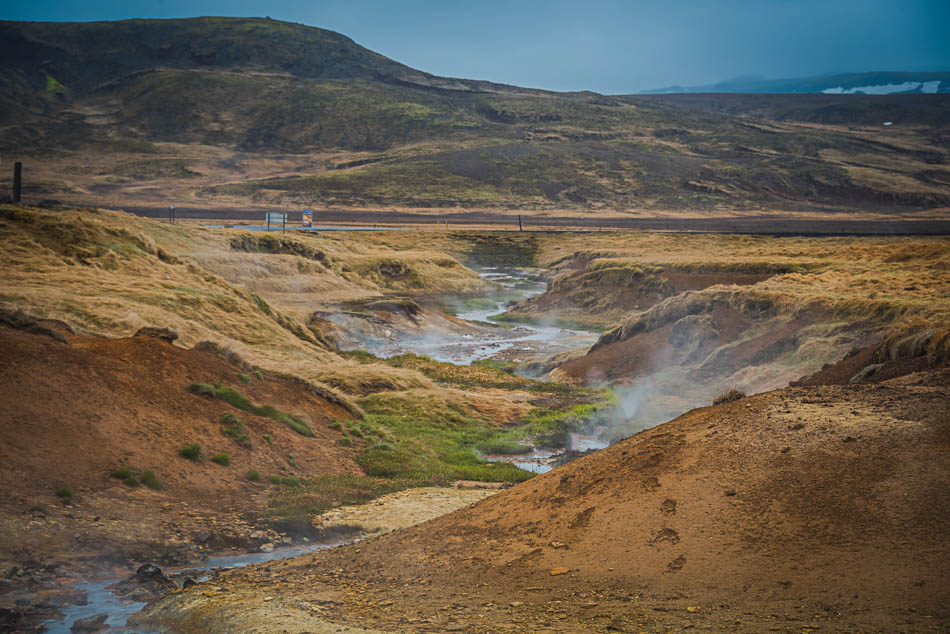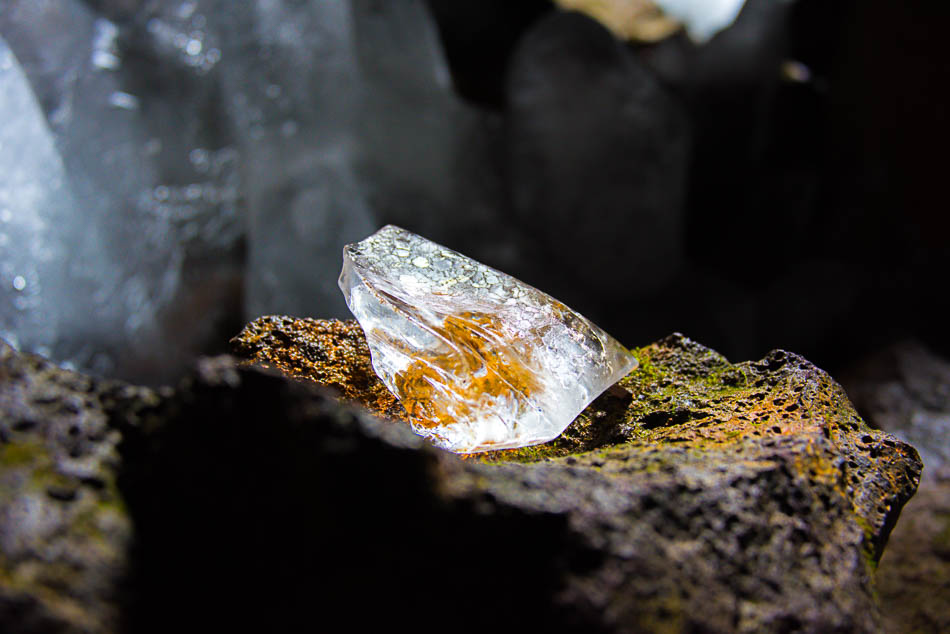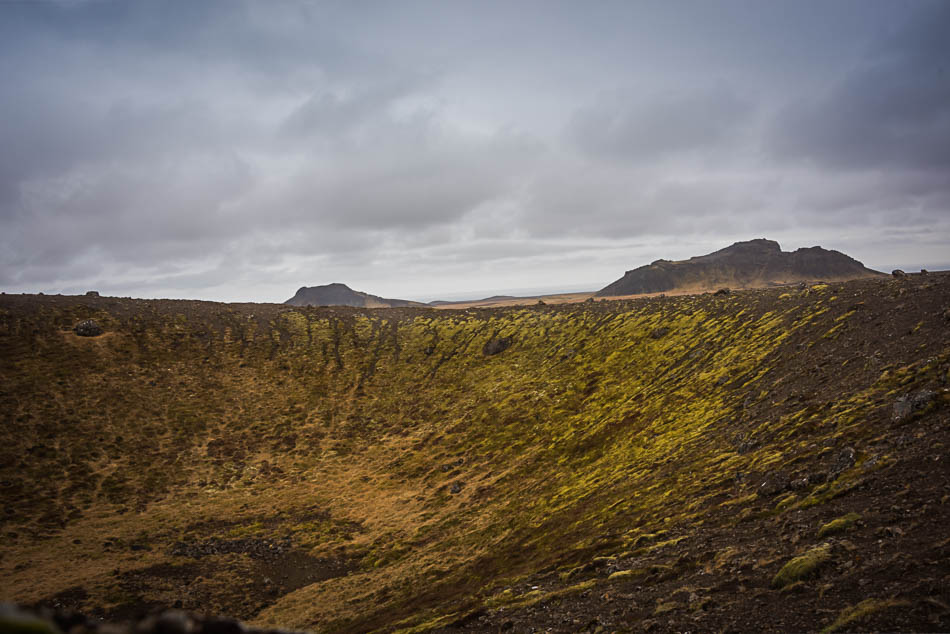
Our last day in Iceland, really. Well, we have tomorrow morning, but that’s going to be taken up cleaning and returning the camper and getting ourselves to the airport. But I am feeling like we didn’t have enough time, we never have enough time. I often feel sad and anxious at the end of a trip, that we have missed something wonderful, or had to rush through something, that there are simply so many other things out there to see and we have to go home! It doesn’t matter how long the trip is, to be honest. I have felt the same way after a ten-day trip, and a five-week trip. I will admit, though, to be being far more exhausted after a long trip — we don’t take relaxing vacations, we’re on the go all the time. If I could, I wouldn’t sleep (and very nearly managed that when up in the Arctic and the sun never set…three days into the trip, I was convinced I never had to sleep again! Bwaaha!)
We spent our night back in Selfoss again, at the very comfortable guesthouse, and the first order of business was to head into Reykjavik to find the semi-mystical camera shop that would have a body cap and lens-connector cap. Remember the hideous camera accident on our first day? When the brand new, never-used D500 crashed to the ground while attached to the giant lens? Whammo, broke the connecting ring and wrenched off part of the front. We only had one extra body cap to keep dust out of the camera, and one lens cap to cover the base of the lens…not enough to repack everything in the backpack, so Mark insisted we head into the city to find the camera shop, Fotoval.
I will admit to being less than gracious about having to go today. The sun, having been absent for a few days, had finally come out and the weather was beautiful and we were going to search out a tiny shop in a strip mall in Reykjavik instead of wandering out in the gorgeous countryside? Hmph. But this was the closest we came to Reykjavik, to be honest. We never did go into the city, preferring to spend out time hiking around lava flows and seeing the beautiful scenics around the rest of the country. Reykjavik is a pretty city, and interesting — the huge modern spired church and the various museums are definitely worth a visit, I have been told. But we prioritized “outside stuff” this trip and will have to settle into the city itself on another trip. Other than this trek in through a surprising amount of traffic to one of the suburbs populated with industrial shops and apartment buildings, we didn’t really spend any time at all in Reykjavik, we just skirted around it.
Forty bucks later, and clouds rolling in, we were heading back out of the city to drive around the Reykjanes peninsula on our last road-trip. The peninsula is part of the youngest region in Iceland, built by repeated volcanic eruptions and lava flows that completely dominate the landscape. Our first exposure was on the trip from the airport into Reykjavik, on the first day. The landscape was like nothing we’d ever seen before — jagged rocks and fields of undulating lava flows, no trees; it looks like something a movie-set designer thought up for a remote planet. Rocky expanses of lava are younger; moss-covered lava fields are usually older than 2500 years.
Further south through the peninsula, though, things get wilder and greener. In the overcast gloom, the moss-covered rocks started to look luminescent green, an unreal crayola-box color. Add in some atmospheric fog and I was quite sure we were on set for the latest Game of Thrones episode.
We detoured a bit out of the way to visit Kerið volcanic crater, which is one of the sites often included on the Golden Circle tours. It’s often the closest most tourists get to volcanoes or volcanic craters, and it’s a doozy. The steep-sided crater is composed of red stone, unlike the usual black volcanic rocks of craters and volcanoes further north. A long string of craters stretches across this region, along a hot-spot that runs from southwest to northeast Iceland — the Mid-Atlantic ridge, where the Eurasian tectonic plate meets the North American one. Things get exciting throughout this swath of volcanic activity, and its been that way for millennia. Hence the string of craters here from cone or cinder volcanoes that erupted, collapsed, and in this case, filled with water. Drive a few kilometers along the road and you can see several other craters, including Seyðishólar and Kerhóll.

The crater is very colorful, even in early spring. I’ve seen pictures from mid-summer where the crater is awash with orange, green, yellow, blue and filled with startling aquamarine water. The water is definitely a spectacular color, even under a cloudy sky. The lake is not rainwater, and there are no tumbling waterfalls or streams to fill it: the water rises and falls with the level of groundwater. Rumor has it that the water here rises and falls with the water level in nearby Búrfel – one rises, the other falls.
Nearly all sites in Iceland are open and free to visit — occasionally places are inaccessible due to weather or dangerous conditions, but in general, you have free access to waterfalls, caves, valleys, volcanoes and such. So when a popular site is not free, it can be quite jarring. Kerið is on private property and the landowners have instituted an entrance fee (a very modest 400 ISK) and have fenced off access to the path around the crater. They are currently building walkways and a viewing platform, and the paths are well-maintained, so it is being put to good use, I think!
It’s hard to get a sense of the scale of things from photo, but the crater is really large (170 m (560 ft) wide, and 270 m (890 ft) long), and I felt pretty tiny climbing around the rim, imagining this as a violently erupting volcanic caldera. Kerið is one of three large craters that are visible in the area, and many more are too small or too eroded to see. Six thousand years ago, this region would have been a chaotic and hellish landscape. Even standing in the lava fields doesn’t quite give me the sense of destruction and power as does this one — relatively small — crater. Strangely, even though the road runs nearby, it’s quiet here. Walk down into the crater (accessible from a steep path on the north side) and the hum of wind and cars just disappears. There’s very little traffic in Iceland, but the wind is a constant droning whine that underscores everything. It’s rarely really quiet in a way you’d expect such desolate areas to be. But descend into the crater and things are silent and still.
The headland of the Reykjanes peninsula stretches out past the airport, the clusters of houses and farms shrinking and getting further apart with each mile. The land is remarkably flat (which suits the airport just fine) and as we approached the point of Garður, the farms have low stone walls and small groups of ponies watch as the traffic rushes by.
Garður is a fishing settlement, with the few houses spread out along the spit of land beyond the town itself. It’s stark here, in a way that the lava fields aren’t — everything is flat and there isn’t a tree to be seen anywhere, even the shrubs seem stunted and grow in small clumps around the houses, as if they can’t stray too far from the protective concrete walls, lest they be flattened. With the winds that howl everywhere in Iceland, I”m surprised anything can grow upright at all.
There are two lighthouses on the headlands — and older Victorian edifice bumped out into the bay and painted with red and white stripes, and a newer concrete lighthouse built in 1944 that has a viewing platform (when it is open in summer). There weren’t many seabirds around, but the rocky coast is well-regarded as a bird-watching site, and there are often whales and orcas seen off the coast. We had no such luck, though, and after a quick walk around the campground and through the fishing boat near the lighthouse (and taking advantage of the very nice facilities in the camp), we set out along the southern coast. There are really only a few main roads on the peninsula, you can drive on all of them in a day if you work at it.
We decided early on not to visit the Blue Lagoon (instead visiting the nature baths near Myvatn), so we just enjoyed the fabulous views as we drove around the lava flows and beaches. It’s eerily beautiful, but I think we’ve gotten a bit jaded with ‘beautiful views’ and it takes a seriously notable view for us to stop and take pictures. Which is unfortunate, really — the peninsula has some great stretches of lava and moss-covered hills, the views out to sea are gorgeous, and yet we’ve been so inured to stunning, jaw-dropping vistas that we actually commented to each other that this was really pretty, but wasn’t actually the prettiest part of Iceland and how sad so many people never got any further into the countryside than this. Jaded, after only two weeks? I’m embarrassed.

Along Rte 42, we started to see signs of steaming ground again. It’s rather startling to see steam just billowing out of the ground, or seeping from the ditches beside the road, and reminds me that the ground beneath our feet is just a thin crust covering up the lava. I read once that if the earth was reduced to the size of a basketball, the actual crust of the earth (the ground as far as we can actually drill, only a few miles) would be the thickness of a sheet of paper and as smooth as a billiard ball. it’s a sobering thought to be walking through a geothermal area, where the hot water and magma are close enough to the surface to bubble through, at boiling temperatures, and think…I’m only a paper-sheet’s thickness away from the boiling mantle of the earth. Most of the time, we’re safely above several miles of solid rock — but here, in the land of random geothermal activity and volcanic vents, it can be measured in feet in some place. Yikes. I can tell you it’s a weird sensation to feel the ground and have it be warm.
Seltún is a small valley with natural hot springs, mud-pots and fumaroles (or solfataras). These vents give off steam and various gases, notably sulfur dioxide. Fumaroles in a thermal spring area are often dry holes or bubbling mud pots emitting steam — they have simply boiled off the water before it can emerge from the ground. There are a dozen or so vents at Seltún, which qualified as a “high-temperature geothermal area” due to water and mud over 200°C, including a man-made 230 foot borehole that exploded recently, taking the tourist coffee kiosk with it. No one was hurt, but it does underscore the unpredictability of these regions. We walked on the boardwalk around the steaming pools, assuming that we are safe if we stay on the path. But there is no guarantee that one of these gently bubbling pots of blue and orange mud won’t suddenly decide to erupt in a geyser-like blast and scald everyone around.
We pulled back onto the road behind an absolutely ancient campervan with French license plates. Someone actually decided to bring their own over on the ferry, and thought that this ancient, rickety brown RV, covered in duct tape and rust, was the best option. We were surprised it could make it up the hills, it rattled from side to side and slowed to a crawl up even the most gentle of slopes. We actually saw quite a few foreign-registered campers, from popup boxes towed behind cars to full-size caravans and everything in between. We even saw a few tiny little hipster campers. This was our last day, May 13, but for so many people, this was just the start of their vacation and the number of tourists will rise exponentially from now until the end of August. We had to jockey for a parking space in the small lot, we felt crowded. We were used to one car an hour and one or two other people at the sights and this small corner of Iceland was starting to feel a bit crowded. I wonder if the locals feel overwhelmed as summer comes on?
On the same stretch of road are two volcanic lakes, Kleifarvatn and Graenvatn. Mineral-rich water is vivid blue, filling maar craters (explosion craters from super-heated groundwater,instead of volcanic calderas). A second shallower crater lies near Graenvatn, it is not deep enough to fill with water, but still a perfect bowl-shaped crater. We’ve seen a bunch of these, they look like someone took a melon-baller to the soft earth and just scooped out half-rounds of rock.
Some of the best times on vacation are the unexpected finds, the surprises that pop up around the corner, the casual invitation to join a group at the pub, the unplanned excursions. Our favorite travel memories include being lost, missing a turn, and suddenly finding ourselves somewhere we never anticipated– in the middle of the Mille Miglia antique car race in Italy, stumbling into a regional horse show in Ireland, ending up marching in the Gay Pride parade in Oslo at 3am, cheering for the wrong side in a bar during the rugby finals. The serendipitous moments when you’re out of your element and just going along for the ride are the true essence of travel experiences.
Such was the moment when we saw the tiny sign for Raufarhollshellir, leading to a small parking area and–as far as we could tell–nothing. I checked the map and realized it was a lava tube cave and since we hadn’t seen one before, we stopped to take a look. The small sign explains the cave (although not the extent of the lava tubes), warns visitors to carry lights and wear sturdy shoes, but the cave is open to visitors.
The entrance is through a hole in one end of the cave, down a steep rocky incline and while I made an attempt to climb down, my heels simply won’t handle it and I decided to sit out the spelunking. Mark initially went down into the entrance of the cave to see if it was “worth exploring” and, more importantly, if it was worth taking the camera in for pictures. He climbed down into the initial cavern and bounded out in a few minutes, breathlessly asserting that he needed the camera, absolutely! He disappeared down into the cave again and I retreated to the car, figuring he’d be a few minutes (I didn’t know at the time how far the cave went, really).
I was startled when another car actually pulled into the parking lot. Two older couples got out, walked over to peer into the sloping hole of the cave, and without even speaking to each other, they all got back in the car and drove away. I was a bit perplexed. I can understand not wanting to climb down (as evidenced by the fact that I was still sitting in the car!), but it was a very strange, very quick scene where they all trooped over dutifully, stood for a moment, then with choreographed precision, marched back to the car and were off. I’m not sure what they were expecting, but apparently this was not it.
An hour passed, and I started to get a bit worried about Mark. What if he’d fallen? What if something happened and he was lost? Shit. It wasn’t like he had cell service down there! Another fifteen minutes and I walked over to the entrance, clambered slowly down to the hole leading into the cave and was trying to decide if I could make it down when he emerged again. I don’t know what I was thinking — go in after him? That would mean two people stuck in the cave, not one. Rescue him from something? Luckly, he was fine, just excited and had lost track of time. When I told him I had started to get worried at the one hour mark, he was utterly surprised it had been that long. He thought it had been, maybe, twenty minutes or so. He’d been so engrossed by the ice and lava formations in the cave that he lost track of everything.
Mark declared it the coolest thing on the trip. Serendipity strikes again!
As we were leaving, a young couple in a tiny Yaris car drove up and asked if it was worth exploring the cave. “Yes!” Mark immediately replied, along with “make sure you have a good flashlight and hiking boots!” Was it safe? they asked. Mark shrugged it off. “As safe as anyplace else in Iceland, I guess.” They dutifully changed out of their tennis shoes and as we were leaving, they were helping each other down into the initial part of the cave. I hope they were as entranced by it as Mark was.
Mark spent a bit over an hour in the cave — he didn’t go too far in, the ice made going very slow and slippery. The day-tours that visit the cave allot four to five hours to explore to the very end of the cave — just shy of a mile, crossing under the road and splitting off into three different chambers at the end. This is the fourth largest cave in Iceland, and one of the few that is just open and doesn’t require specialized equipment to explore.
He even got a bit artistic with the photography, trying to capture the bizarre ice formations and lighting in the cave.

We’re spending the night in a hotel — it’s the Great Repacking to get all of this stuff that has expanded to fit the back of the truck back into our luggage and ready to load on the plane. We’re staying at the rather kitschy Viking Hotel tonight — it’s in Hafnarfjordur, about twenty minutes from the airport, and , well, who can resist staying someplace staffed by people in viking-era clothing? Lots of dark wood, barrels, and low-ceilings, but the rooms are comfortable. Ours has an absolutely enormous deep tub (with very sulfurous-smelling water, as usual). It was our own private hot-tub, really. The water coming out of the faucet was hot!
It took Mark almost half an hour get stuff the enormous poofy sleeping bag back into the stuff sack, and we got all of our stuff packed and coordinated and staged for leaving tomorrow, accompanied by the bottle of Veuve Clicquot we bought from duty-free when we arrived — we never made it to the most gorgeous campsite ever (Þakgill) to drink it. We just ran out of time.
I don’t want to go. I did suggest that we just extend the vacation a week or so, but I was shot down ruthlessly. Work, blah blah blah, responsibilities, blah blah.


